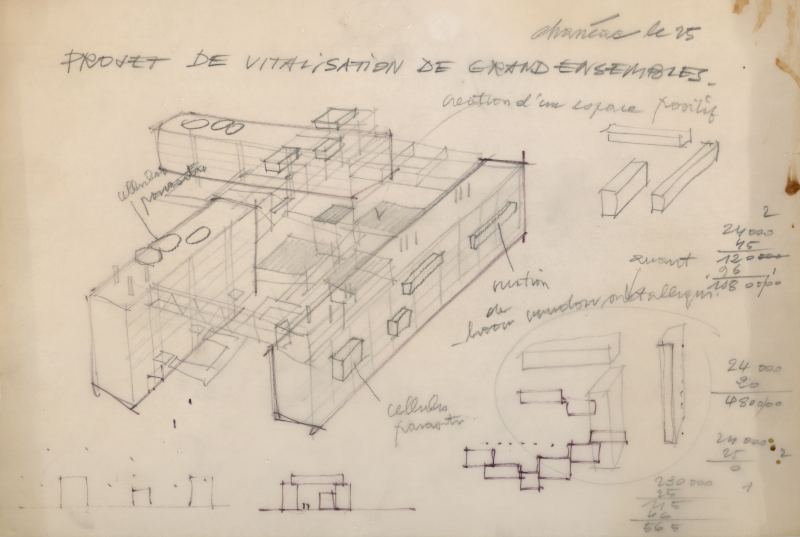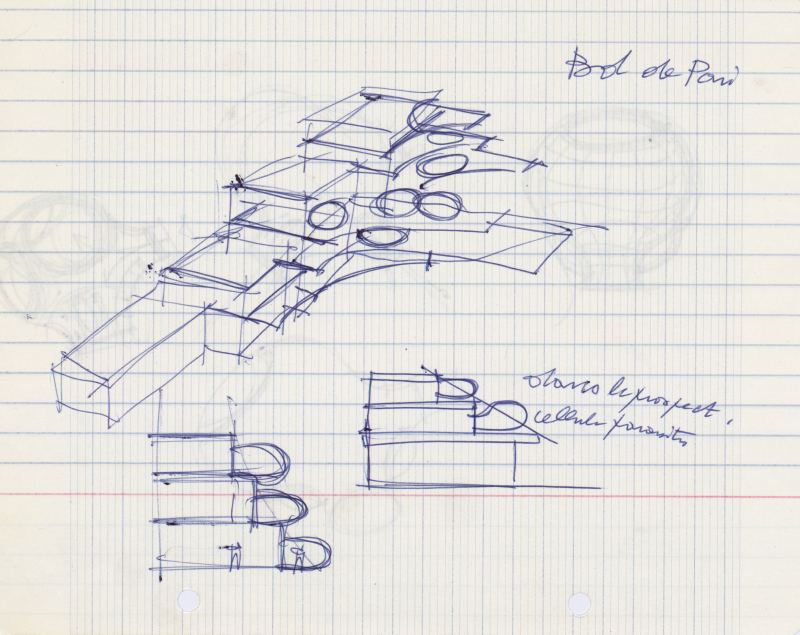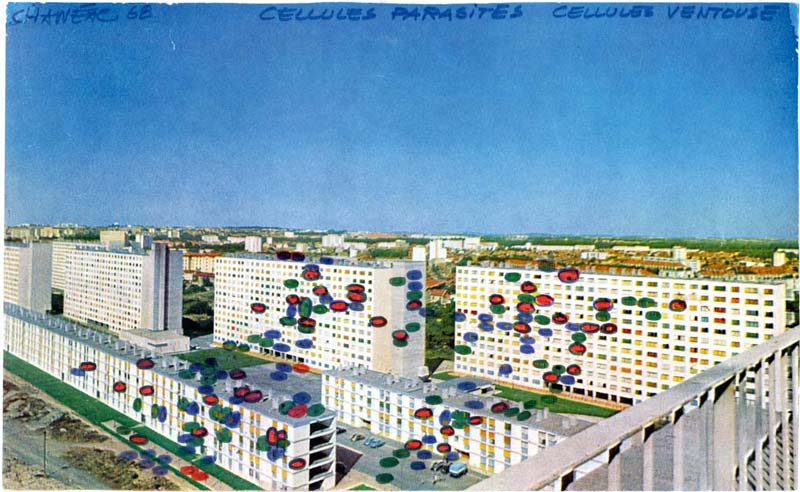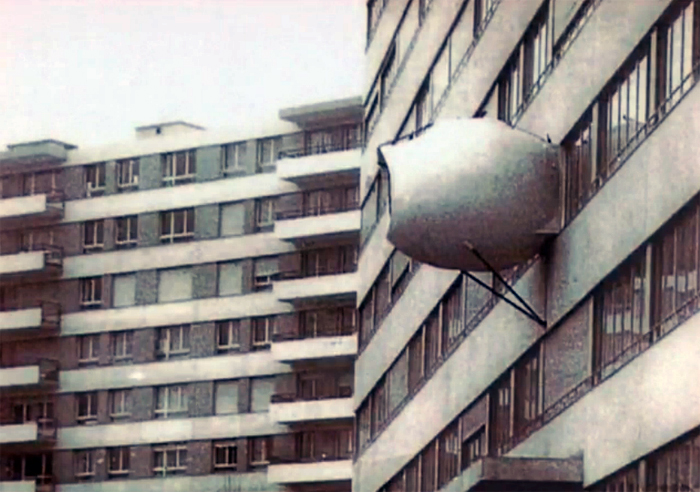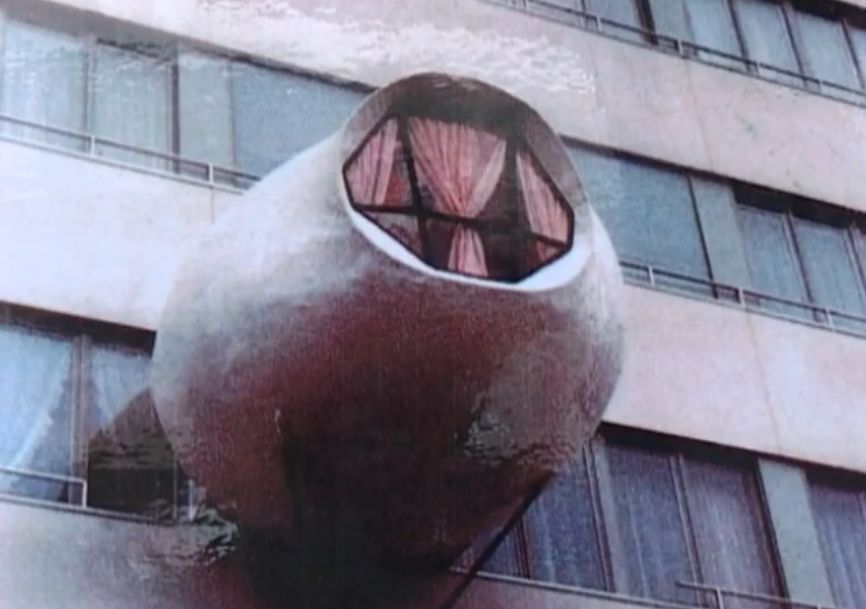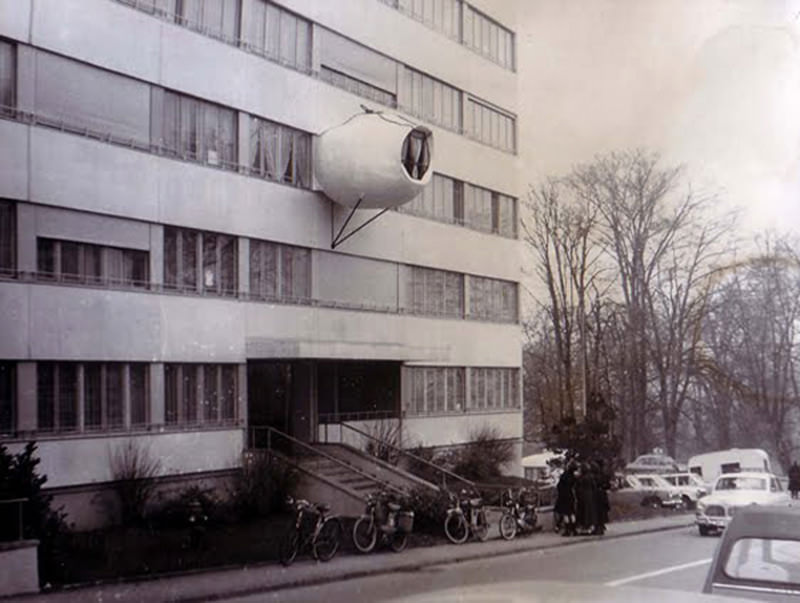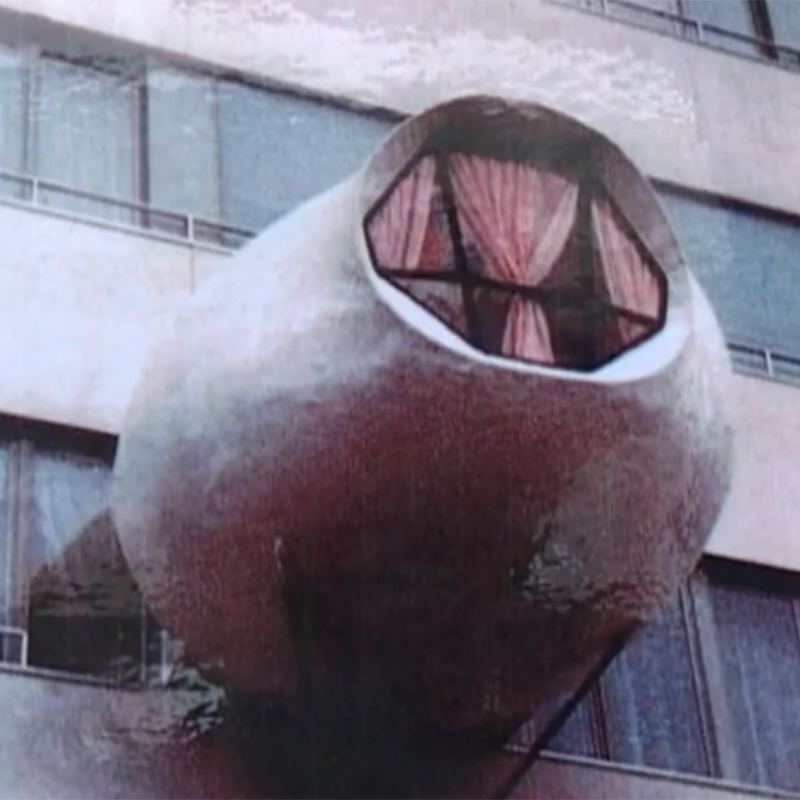The research of Jean-Louis Chanéac about Polyvalent cells evolved in a new idea that the architect would name as Parasite Cells. These were habitable volumetric elements that can be produced by the industry or built spontaneously by the own individuals and that were anchored to the existing architecture with a foreign geometry to it.
La investigación de Jean-Louis Chanéac sobre células polivalentes dio lugar en cierto momento a una evolución que el arquitecto denominaría como células parásitas. Eran elementos volumétricos habitables que pueden ser producidos por la industria o construidos de forma espontánea por los propios individuos y que se anclaban a la arquitectura existente con una morfología ajena a la misma.
Parasite Cells were included within the concepts of AnarchoArchitecture or Pirate Architecture because they became a critical approach to the postwar urban landscape that came after the Athens Chart. The function of the cells had a playful and poetic component within the home.
Las células parásitas de Chanéac entraban dentro de la denominación de Anarcoarquitectura o Arquitectura Pirata ya que se convertían en una crítica al paisaje urbano de la posguerra que había emanado de la Carta de Atenas. La función de la misma también tenía un componente lúdico y poético dentro del hogar
After theorizing about these cells, Chanéac managed to build and hang one of these cells on a public housing project in Geneva.
Tras teorizar sobre estas cápsulas, Chanéac consigue construir y colgar una de estas cápsulas sobre un edificio de protección oficial en Ginebra.
